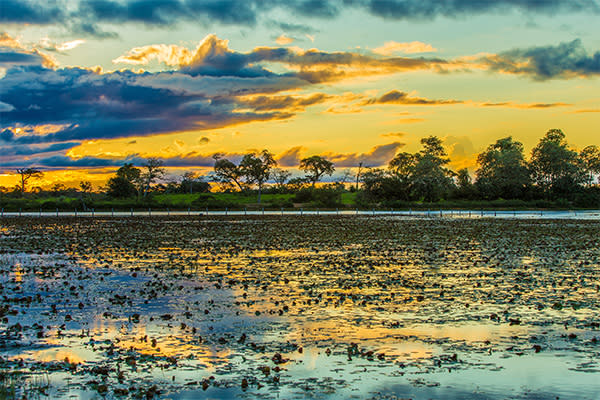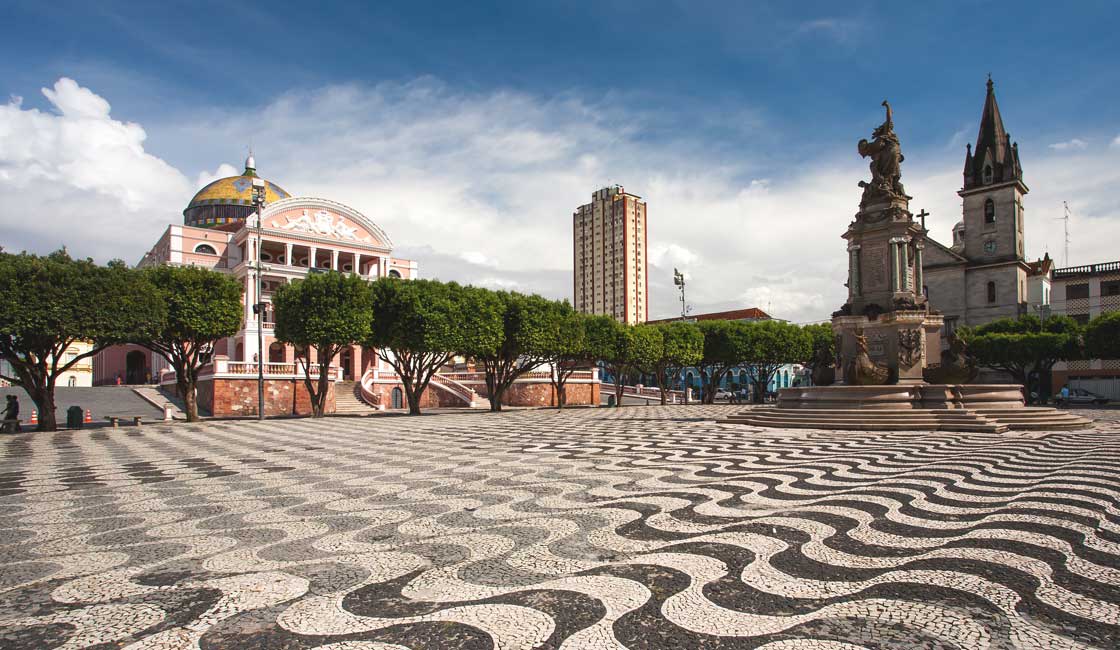
Manaus is the capital of the Amazonas state in Brazil, and is a popular ecotourism destination. Almost 50% of the Amazon River’s population lives in the city, making it the primary cultural and economic hub of the Brazilian Amazon. There are countless reasons to visit the city, both man-made and natural, and the history of Manaus makes it an important city in Brazil worth visiting.
Manaus was founded in 1669 and declared a town (with the name Manaus, meaning Mother of the Gods) in 1832. It was subsequently transformed into a city on the 24th of October, 1848 and re-named Cidade da Barra do Rio Negro, only to be changed back to Manaus on September 4th, 1856.
The colonization of 1669 started with the building of forts; an attempt to ensure that the Portuguese were the main force in the area. The fort helped defend against invasions such as the Invasion of the Dutch, who occupied Suriname at the time.
In 1835 there was a revolt, known as Cabanagem, against the political elite of the city. The blacks, Indians and mestizos protested and eventually took power, recruiting non-whites as they roamed throughout settlements in the region. This was a bloody time in the region’s history, with an estimated 40% of the population losing their lives. Power shifted between the opposing sides until in 1840 the last rebel group yielded. The revolt had a profound impact on the area that is still felt today.
In the 19th Century, Manaus was also at the center of the rubber boom. Rubber barons generated obscene personal wealth and the city became an architectural playground for those with cash in their pockets.
The city’s oldest market place, the Mercado Adolpho Lisboa founded in 1882 is one such example, with its grand edifice inspired by Paris’s famous Les Halles market, and features a labyrinthine bazaar and fragrant fish market & cafes. But perhaps the most spectacular example is its $10m opera house – Teatro Amazonas – which was built in 1884 at the height of the city’s opulence.

Espaco Cultural Largo de Sao Sebastiao
It wasn’t to last, however, and once the seeds of the rubber tree left the Amazon region, Manaus fell into crippling poverty, unable even to power the electricity lines that had been brought to the city during the more affluent ages. In the 1950s, the city was declared a Duty Free Zone, and that has helped buoy the city’s economy.
In 2014 it controversially became one of the host cities for the World Cup, with the $300m construction of its all-seater 44,300-capacity Arena Amazônia to host just 4 games considered the ultimate “white elephant”, an expensive, unnecessary and oversized stadium, which has since been rarely used, with local matches typically attracting fewer than 1,000 people.
Today the city is a top tourist destination for those wishing to explore the Brazilian Amazon, and is the traditional start point for Amazon River Cruises in Brazil.
While Rainforest Cruises aim to provide accurate and up-to-date information, we make no representations as to the accuracy or completeness of any information herein or found by following any link on this site. Rainforest Cruises cannot and will not accept responsibility for any omissions or inaccuracies, or for any consequences arising therefrom, including any losses, injuries, or damages resulting from the display or use of this information.




